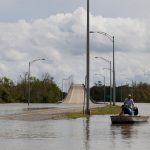
You’ve probably noticed a lot of buzz over the past few weeks about nonfungible tokens, or NFTs, the digital artworks that are stamped with unique codes. Last month, one of them sold for more than $69 million at a Christie’s online auction.
Unfortunately, the prices for NFTs aren’t the only thing that’s huge: They come with an astonishing environmental footprint. According to one estimate, the creation of a single NFT, on average, produces as much greenhouse gas as a 500-mile trip in a typical American gasoline-powered car.
The culprit is blockchain technology, which underpins these digital tokens and is also the basis for Bitcoin. It relies on specialized computers racing to solve complex equations by making quintillions of guesses a second. Researchers at Cambridge University have estimated that Bitcoin mining alone, not even counting NFTs, uses more electricity than entire countries like Argentina, Sweden or Pakistan.
Quotable: “The numbers are just crushing,” said Chris Precht, an architect and artist. “As much as it hurts financially and mentally, I can’t.”
A glacier picks up speed, and scientists get a frisson
Muldrow Glacier, in Denali National Park, Alaska, is currently moving at up to 90 feet a day. That might not seem like much, but that makes it a speed demon. (Like most glaciers, the Muldrow’s normal speed is measured in inches per day. Where do you think the term glacial pace comes from?)
The Muldrow is undergoing a rare surge, much to the delight of glaciologists, who have seized on the chance to study it. Scientists don’t fully understand why surges occur, why they happen on only about one of every 100 glaciers in the world, and how climate change may affect them.
Researchers do know that the balance of mass between the upper and lower parts of a glacier plays an important role. Over time, ice accumulates higher up, where it’s colder, and melts farther down, where it’s warmer. So the glacier gets out of kilter, and the fast movement of the surge restores the balance.
See for yourself: Our article includes an animation of the surge by my colleague Jugal K. Patel.
Biden’s climate summit
President Biden is planning a climate summit on April 22, Earth Day, and China will be a crucial player. So Mr. Biden is sending John Kerry, the top American climate diplomat, to Beijing on Wednesday in an effort to persuade Chinese officials to strengthen their plans to reduce greenhouse gas.
It could be a tough job. Relations between the two countries are at a low. And, the United States itself is far from meeting its own targets for greenhouse gas emissions.
Still, by reaching out to China, Mr. Biden and Mr. Kerry and are sending a strong signal that climate change is a critical foreign policy issue for the United States. For more on the Earth Day summit and the climate challenges facing the Biden administration, you can read my article here.
Related: More than 300 corporate leaders are asking the Biden administration to nearly double emissions-reduction targets set by the Obama administration.
As the effects of climate change become more apparent, more people are asking how society can and should cope. Two new books offer different takes on that question.
In “Adapting to Climate Change,” Matthew E. Kahn, an economics professor at Johns Hopkins University, argues that market forces can help people adjust to worsening disasters. Rebecca Elliott, a professor of sociology at the London School of Economics and Political Science, examines the moral trade-offs in those market forces with her book “Underwater.”
We asked Dr. Kahn and Dr. Elliott what the United States is learning about climate adaptation — and what keeps them optimistic. Their responses have been edited for length and clarity.
Q. Are we getting better at adapting to climate change as we talk about it more?
Matthew Kahn: Those who can afford adaptation-friendly products, from air conditioning to higher quality housing, will be more likely to invest in these goods as they perceive the rising risk of not taking defensive actions. Adaptation through market products protects us from climate risk.
Rebecca Elliott: Social scientists and activists have forcefully argued for climate change adaptation that is just, inclusive, and equitable. But even though we have a lot of good ideas, it takes political will to put them into place.
Q. What’s the most important thing people get wrong about adaptation?
Matthew Kahn: The beneficial adaptation role that capitalism plays. If an area faces increased flood risk, local insurance rates must rise and reward property owners for investing in risk reduction measures.
Rebecca Elliott: Climate change adaptation requires a critical examination of the role of private property in American life. Adaptation that narrowly focuses on protecting private property and shoring up real estate markets will potentially worsen existing racial homeownership gaps and leave out renters and tenants.
Q. This is often a depressing topic. What’s your best argument for optimism?
Matthew Kahn: Collectively, we have great ingenuity. Our skill can be used to mitigate those threats that we prioritize.
Rebecca Elliott: A lot about the “normal” state of affairs isn’t working for many people anyway. We can fight against climate change while fighting for the kinds of social and economic change that will make more people better off.
If you’re not getting Climate Fwd: in your inbox, you can sign up here
We’d love your feedback on the newsletter. We read every message, and reply to many! Please email thoughts and suggestions to climateteam@nytimes.com.

Average Rating